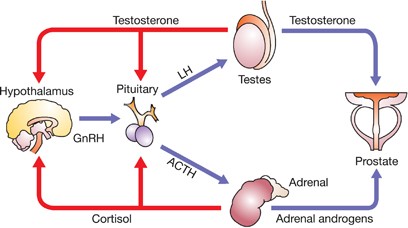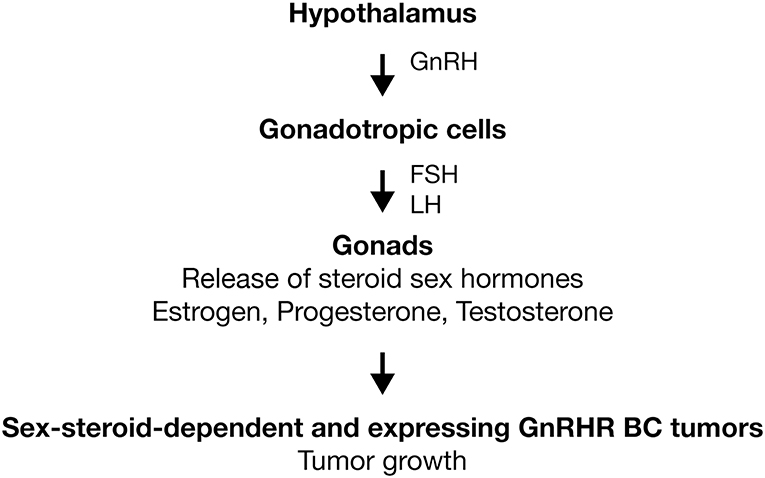These side effects can include. The decapeptide Cetrorelix an LHRH antagonist inhibits gonadotropin and sex steroid secretion.
 New Considerations For Adt In Advanced Prostate Cancer And The Emerging Role Of Gnrh Antagonists Prostate Cancer And Prostatic Diseases
New Considerations For Adt In Advanced Prostate Cancer And The Emerging Role Of Gnrh Antagonists Prostate Cancer And Prostatic Diseases
The next hurdle in the drug development of LHRH antagonists.

Lhrh antagonist side effects. Luteinizing hormone-releasing hormone LHRH antagonists work by directly inhibiting LHRH without any initial stimulation of the LHRH receptor. More common side effects associated with prostate cancer hormone therapy include. They prevent premature ovulation so your doctor will be able to retrieve the eggs from the ovaries before they are released and lost Dont.
The physiologic response is a direct and rapid decrease in luteinizing hormone follicle-stimulating hormone and testosterone without any flare. Freedland and Abrahamsson summarize six studies on the side effects of Firmagon. It should be emphasized that there are no data from clinical trials to suggest that the second-generation product degarelix is associated with any form of allergic reaction.
Possible side effects Orchiectomy and LHRH agonists and antagonists can all cause similar side effects from lower levels of hormones such as testosterone. Up to eight out of ten men on LHRH agonists. Potential advantages of LHRH antagonists versus agonists are absence of flare rapid down regulation no need for combination therapy with an antiandrogen improved compliance fewer side effects minor costs simplification of management by removing the need to educate patients about antiandrogen use more targeted therapy with a potential direct effect.
Hot flushes are a common side effect of hormone therapy and can affect men on LHRH agonists or anti-androgens. However disadvantages of LHRH agonists include high repeating costs libido loss impotence and hot flashes. They conclude that for patients with pre-existing cardiovascular disease the chance of a serious cardiovascular event such as a heart attack or stroke is reduced by more than half in the first year of treatment for patients on LHRH antagonists compared to.
GnRH antagonists are injectable medications that are used during IVF treatment. Several inhibitory analogues of LH-RH have been tested in men and women and shown to be active. AnaBGD iStock Photo.
Fast and irregular heart beat bone muscles and joint pain fainting and fast and irregular breathing and shortness of breath numbness and tingling in the hands and feet swelling of the eyes and the eyelids skin rash or. These effects are being utilized for the possible development of contraceptive methods. Although there has been extensive basic-science work on these medications.
They can be similar to the hot flushes women get when theyre going through the menopause. Large doses of stimulatory analogues of luteinizing hormone-releasing hormone LH-RH caused paradoxical antifertility effects. The GnRH antagonist degarelix may be associated with a lower incidence of CV events than LHRH agonists The difference in risk appears likely to be due to the differing mechanisms of actions of the types of ADT Risk of CVD should be carefully.
In this succinct review Drs. A study just published in European Urology suggests that in addition to all the other side effects associated with LHRH receptor agonist therapy such therapy also induces a small but statistically significant increase in risk for biliary disease. Luteal cells incubated with two doses of antide 10-4 and 10-7 M for 24 or 48 h showed suppression of P4 production.
Summary ADT is associated with an increased risk of CV events metabolic and musculoskeletal side effects. Gynecomastia enlargement of the breast or tenderness and pain in breasts Bloating or swelling of the face hands arms feet and legs Lower back or side pain Flu-like symptoms including body aches fever chills. Herein we have described a direct inhibitory effect of an LHRH antagonist Nal-Lys antagonist.
However little is known about the effects of Cetrorelix on the brain function. Antide on the basal progesterone P4 and pregnenolone P5 production by luteal cells obtained from the day-8 pregnant rat. Side effects of the GnRH agonists are signs and symptoms of hypoestrogenism including hot flashes headaches and osteoporosis.
Reduced or absent sexual desire. Importantly the testosterone surge that occurs after initial injection of LHRH agonists can cause tumor flare in up to 63 of patients with advanced disease. Cetrorelix is used for IVF-ET procedures and for the treatment of patients with prostate carcinoma benign prostatic hyperplasia endometriosis leiomyomas and ovarian cancer.
In patients under long-term therapy small amounts of estrogens could be given back add-back regimen to combat such side effects and to prevent bone wastage. Some less common side effects that may occur with use of LHRH agonists include. The structural combination of a hydrophobic N-terminus residues 1 2 and 3 and a basichydrophilic C-terminus residues 6 and 8 was thought to be responsible for some HR reactions encountered with the second generation of LHRH antagonists.
The synthetic approach based on inhibitory analogues of LH-RH. The Side Effects of LHRH Antagonist Therapy We have already noted that the first generation LHRH antagonist abarelix was associated with a significant risk for serious allergic reactions. This side effect was greatly reduced by substituting the appropriate combination of amino acids at positions 5 6 and 8.
The most common side effects of GnRH antagonists like Ganirelix are abdominal tenderness and headache.